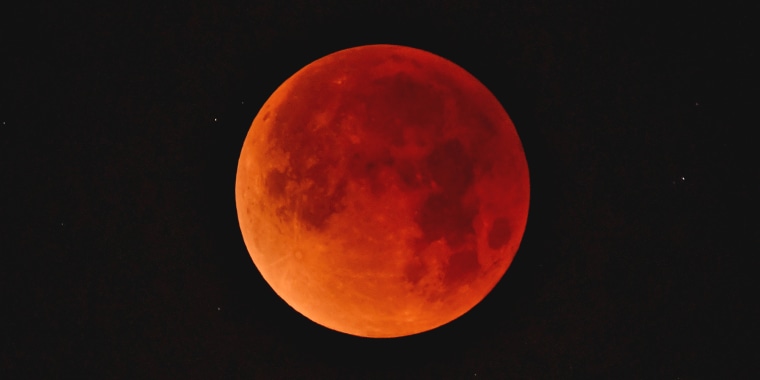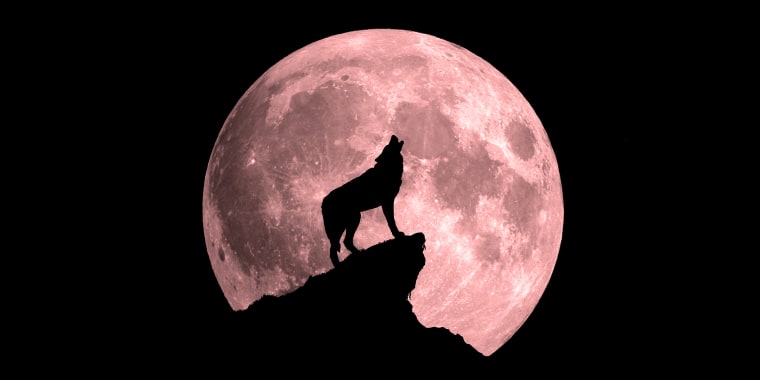Are you ready for the coming of the "super blood wolf moon?"
Most of the U.S. will be seeing red on Sunday night when the combination of a total lunar eclipse and a full moon in January produces a curiously named lunar phenomenon.
The "super blood wolf moon,'' which will be visible in its entirety in North and South America on Jan. 20, occurs when the moon and sun are on the opposite sides of Earth, and the moon moves into Earth's shadow.
"This is an exciting lunar eclipse in that it will be a total lunar eclipse, with the entire moon going into the dark inner shadow of the earth,'' Michael Shanahan, the director of the Liberty Science Center Planetarium in New Jersey, told TODAY in an email.

"This means that the moon will go quite dark during the total phase, and may have a deep copper hue."
“This one is particularly good," Rice University astrophysicist Patrick Hartigan told the Associated Press. “It not only is a supermoon and it’s a total eclipse, but the total eclipse also lasts pretty long. It’s about an hour.”
Sunday night will mark the final lunar eclipse of the decade and the first seen across the country since 2010.
The "super" refers to a super moon, which means it looks larger and brighter because it's the closest the moon gets to Earth during its orbit.
"Blood" is referenced because the moon takes on a copper or reddish hue during the lunar eclipse. A blood moon occurred in July 2018, but it was not visible from North America.
Full moons in January were sometimes called "wolf moons" by Native American tribes and early settlers because wolves were often heard howling outside villages in hunger during winter months, according to the Old Farmer's Almanac.
Unlike the solar eclipse of 2017, viewers don't need any special glasses or eye protection while taking in the view.
The partial phase before the total eclipse begins at 10:33 p.m. EST on Sunday night. The total phase, when the moon is darkest, will start at 11:41 p.m. ET.
The most dramatic phase will span from 11:41 p.m. to 12:43 a.m. on Jan. 21, followed by a partial phase that lasts until 1:50 a.m. as the moon returns to the light.
A possible snowstorm across the Midwest and Northeast on Sunday should not affect viewing as long as the sky clears by the time it begins, Shanahan said. The lunar eclipse lasts several hours, so it means the odds of seeing some of it are good even if the clouds are coming and going.
There won't be another total lunar eclipse that can be seen from the U.S. until 2021, and the Northeast won't get another glimpse at one until 2022.
